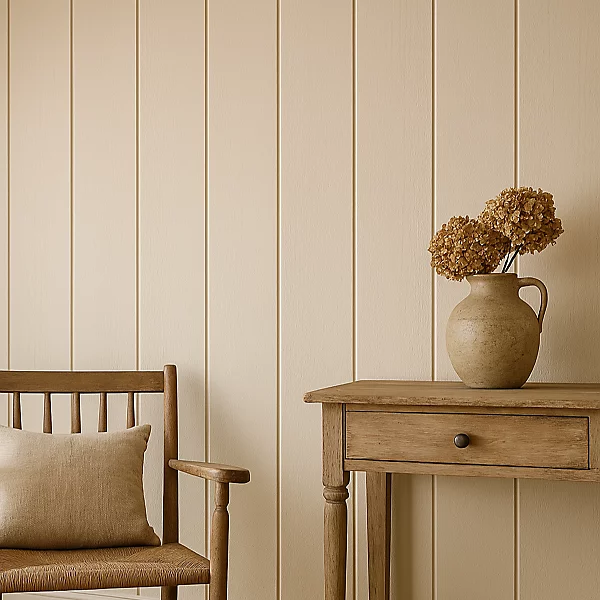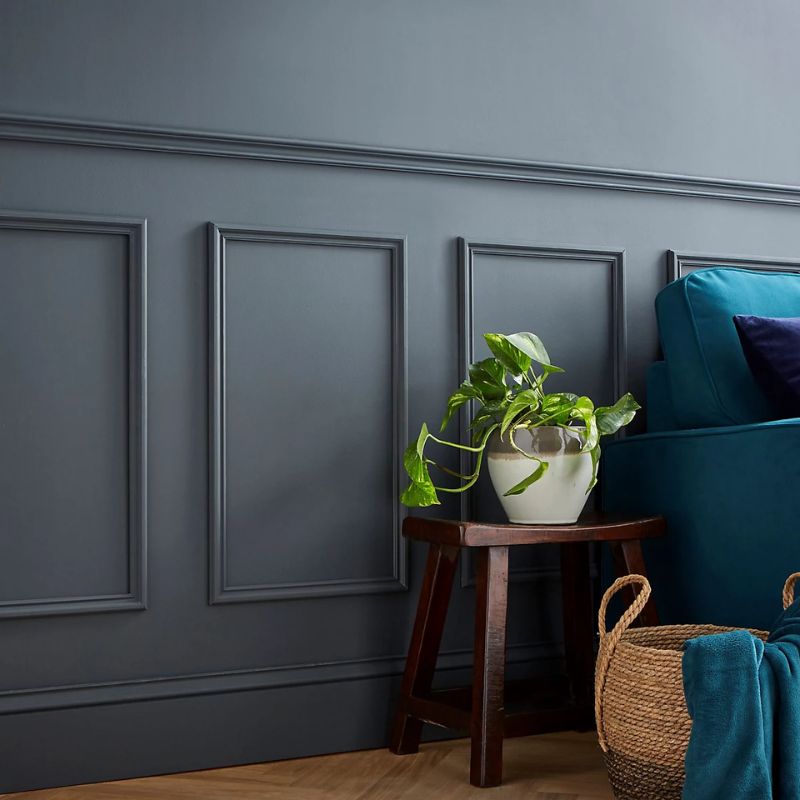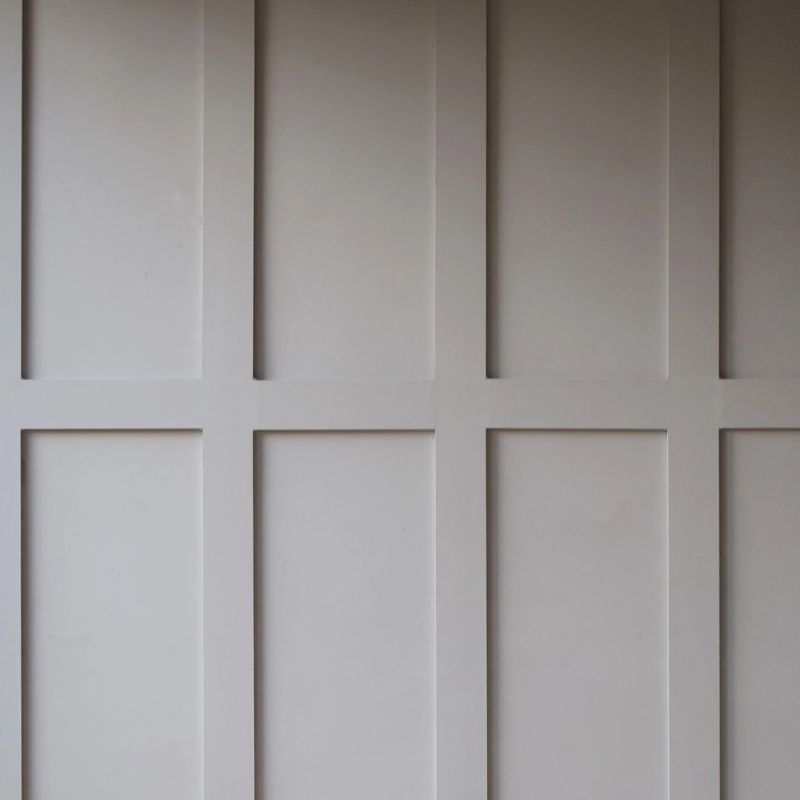The 13 Types of Wall Paneling That Interior Designers Are Using in Their Projects Right Now, Ranked in Order of Style
From classic tongue and groove to contemporary slatted paneling, here's all you need to know about the most stylish types of wall paneling
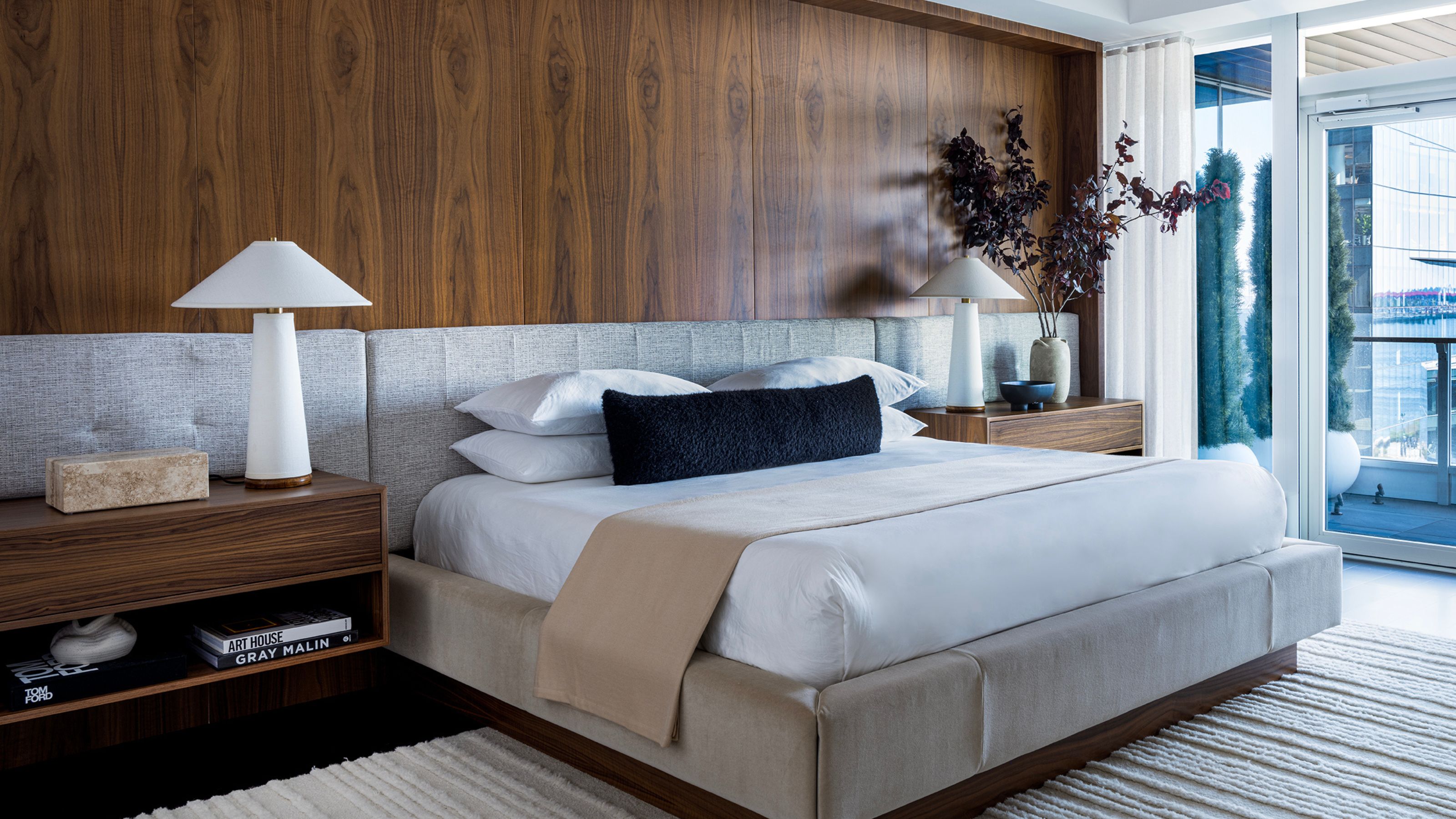

It's well known that adorning a wall with paneling is one of the best ways to add character to a room, but choosing the right style is key. From sleek tongue-and-groove to the more unexpected geometric, there are endless types of wall paneling to choose from, all of which create a different mood and feel.
"Well-proportioned architraves, cornices, generous skirtings, and paneling all help anchor a space and give it a sense of weight and permanence," says designer Tom Cox of HÁM Interiors. "They can completely transform the atmosphere, especially in newer rooms or spaces that risk feeling a bit flat."
Here, we've shared the modern wall paneling ideas interior designers are using in their projects right now, and ranked them in order of style to give you some steer with the most current options for 2025.
1. Vertical Wood Cladding
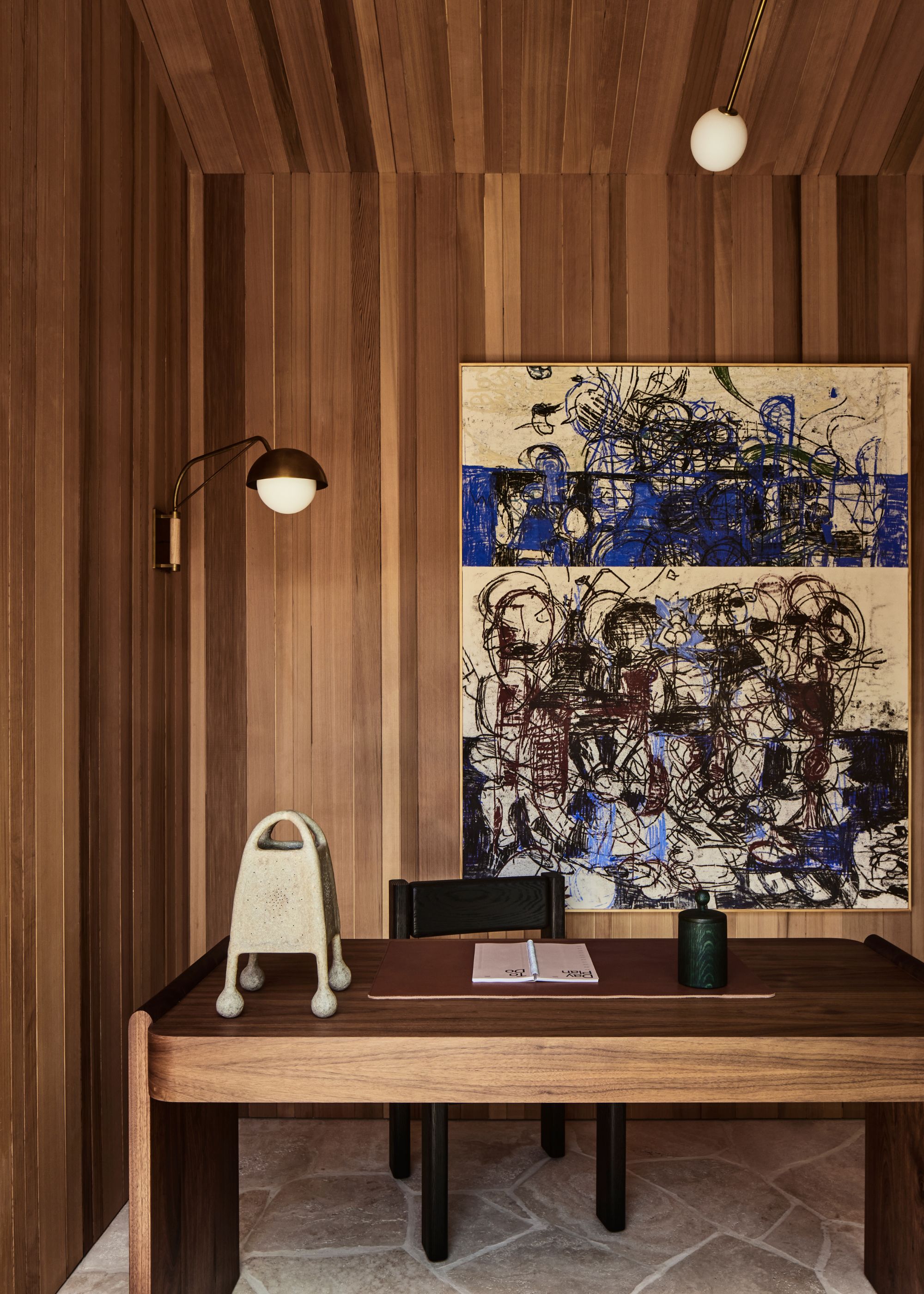
Wood-clad wall paneling brings warmth, charm, and a retro-feel to rooms.
Arguably, the hottest type of wall paneling right now is also the boldest: wood-clad walls that evoke cozy cabin-esque warmth. In this home office by Los Angeles-based designer Jessica Nicastro, wood drenching offers a dramatic take on paneling.
"These walls are clad with cedar, which gives the space a cozy, layered feel," the designer explains. "We love using wood paneling to bring warmth and texture into a room in a way that plain painted walls just can’t. It adds depth and a natural character that really elevates the atmosphere."
When opting for the natural warmth of woods like cedar, one downside to consider is that exposure to sunlight can cause fading, so maintenance is required. "It might need to be stained or sealed regularly to keep it looking fresh," says Jessica, "but overall, it’s a beautiful, durable choice that adds a lot of aesthetic value and an organic touch to any space."
2. V-Groove Wall Paneling
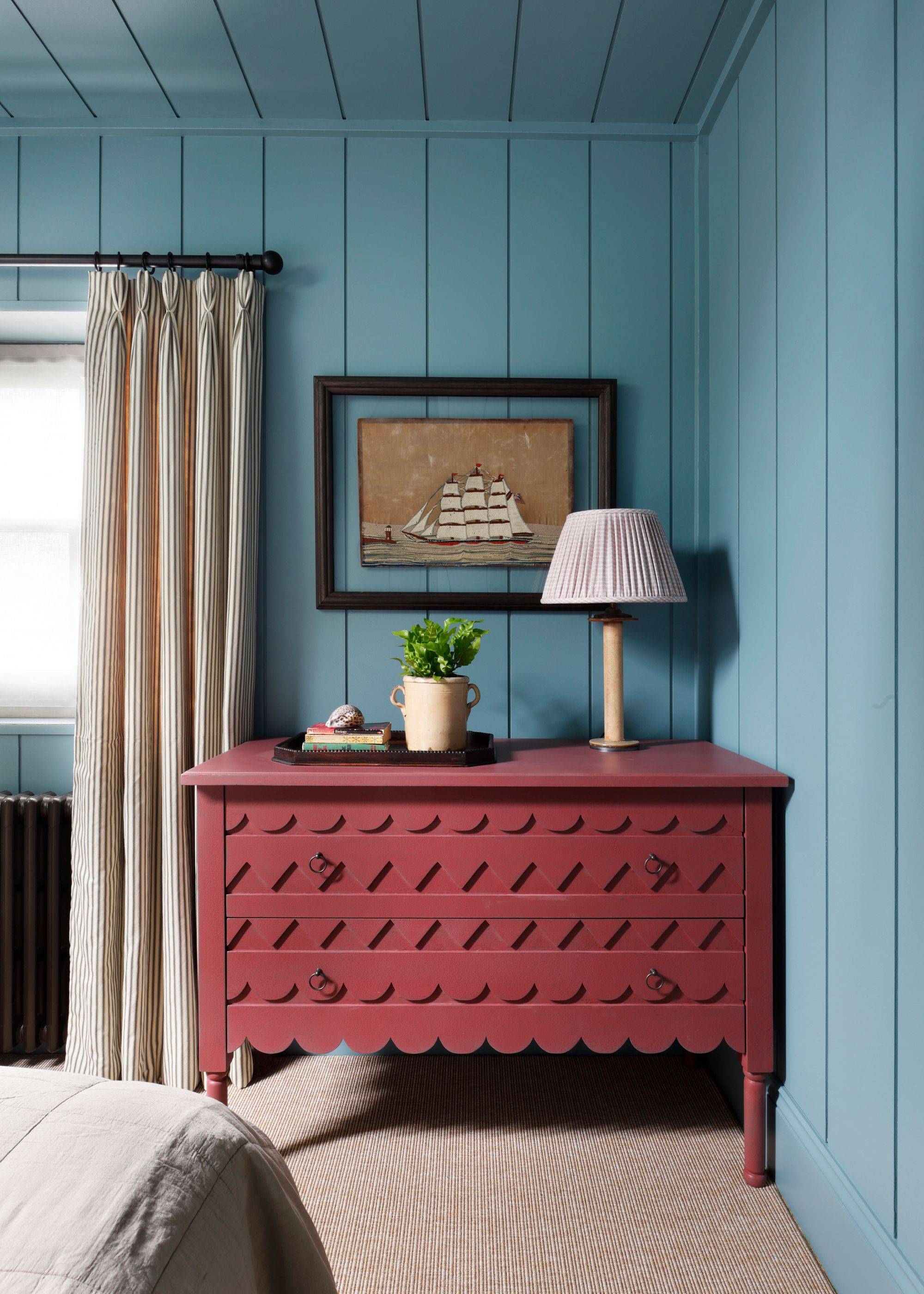
V-groove paneling is one of the most timeless styles, creating a streamlined look.
V-groove is a specific variation of tongue-and-groove wall paneling, defined by the 'V' profile where each panel interlocks. It creates a classic and polished look, perfectly suited to older homes.
The Livingetc newsletters are your inside source for what’s shaping interiors now - and what’s next. Discover trend forecasts, smart style ideas, and curated shopping inspiration that brings design to life. Subscribe today and stay ahead of the curve.
In this blue bedroom by HÁM Interiors, the V-groove paneled walls continue onto the paneled ceiling for added interest. "Paneling adds another layer to the interior architecture, much like layering fabrics or textures in a room; it brings character and warmth, helping the space feel more established, as though it has evolved over time," explains designer Tom Cox.
"It gives structure, a more finished feel, and in this case connects back to the building’s coastal setting, where straightforward, hard-wearing finishes are part of the decorative tradition," he adds.
Designer Georgina Cave, director at London-based Cave Interiors, also rates V-groove paneling, adding that it's "more refined than shiplap", "grounds a room and softens the sharper lines of contemporary architecture."
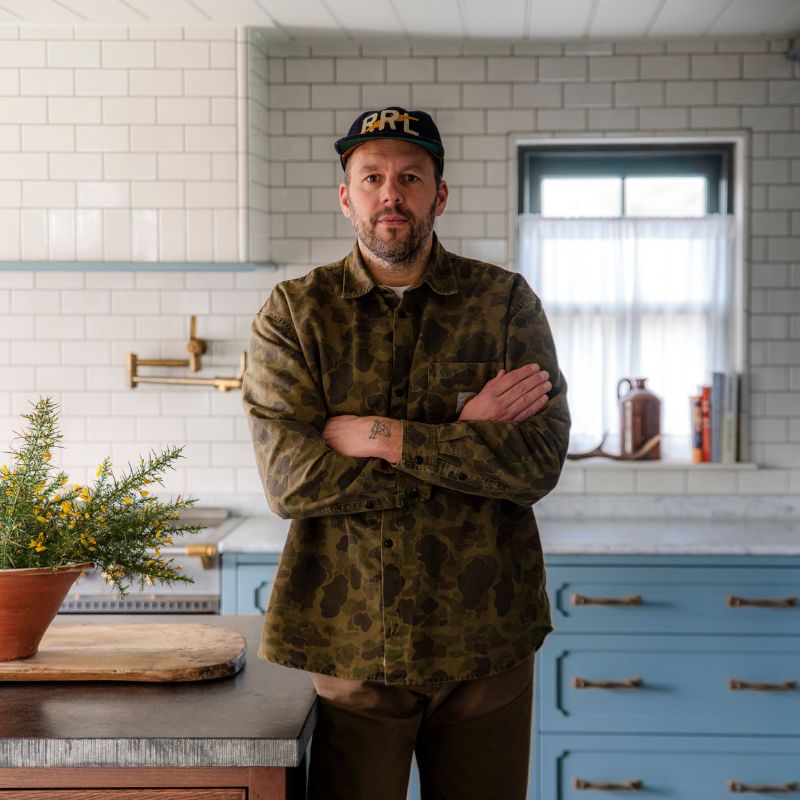
HÁM Interiors is a family-run architecture, interior design, and build practice, led by principal Tom Cox and founded with his parents, Nick and Pamela, and his sister, Kate. Tom's own interior design style is layered and colorful, creating thoughtful and comfortable homes.
3. Nickel Gap Wall Paneling
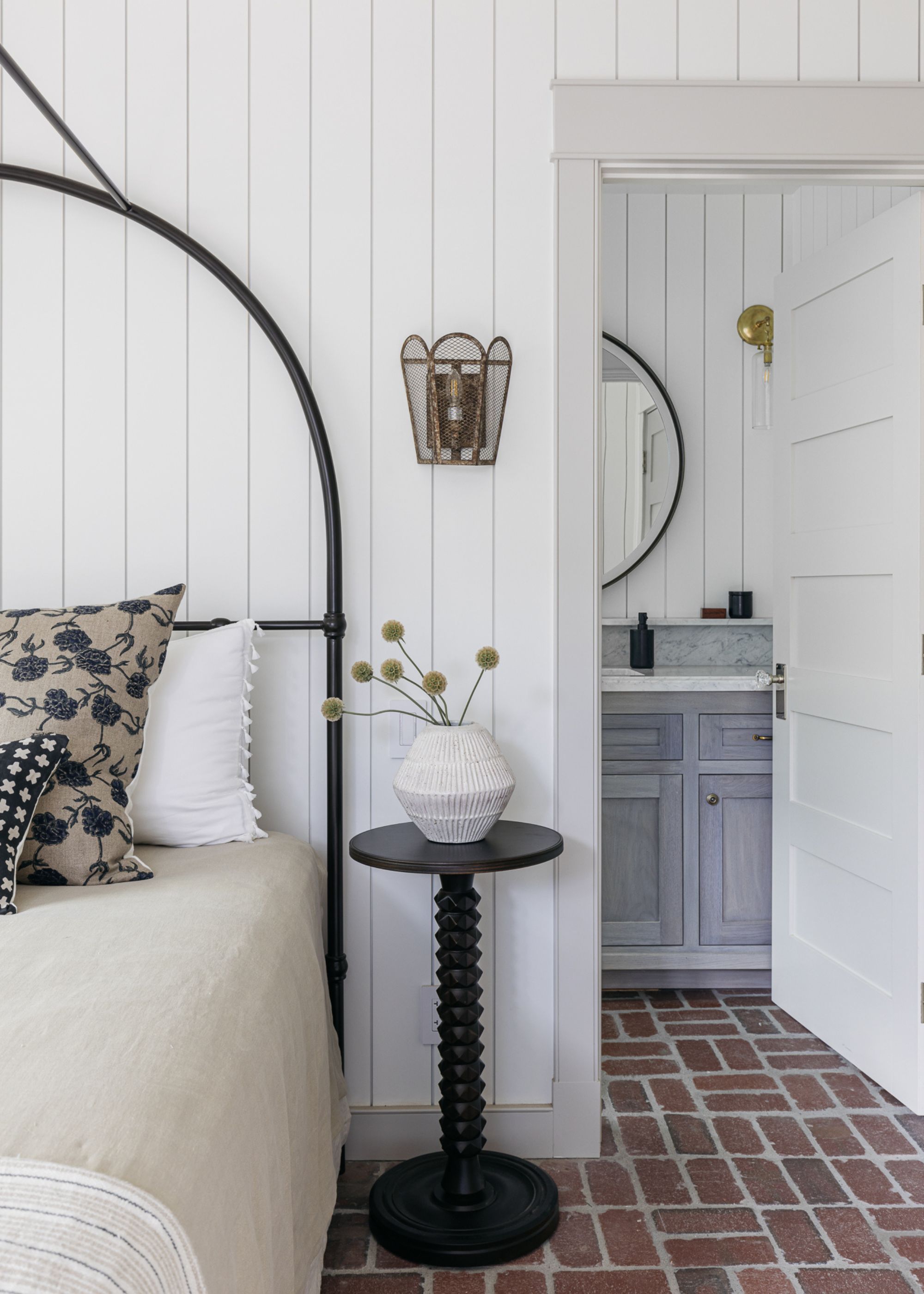
For a slightly more modern take on tongue-and-groove paneling, choose nickel gap.
Another type of tongue-and-groove that's popular among designers right now, nickel gap paneling features a square-shaped gap in between each plank of wood, rather than a V, and can be seen on the walls of the coastal bedroom shown above.
"Nickel groove tends to look a bit more modern because it offers straighter lines and a more defined shadow in each groove," designer Christine Costa-Zippert explains. "It also creates texture and interest without overtaking small spaces."
4. Reeded Wall Paneling
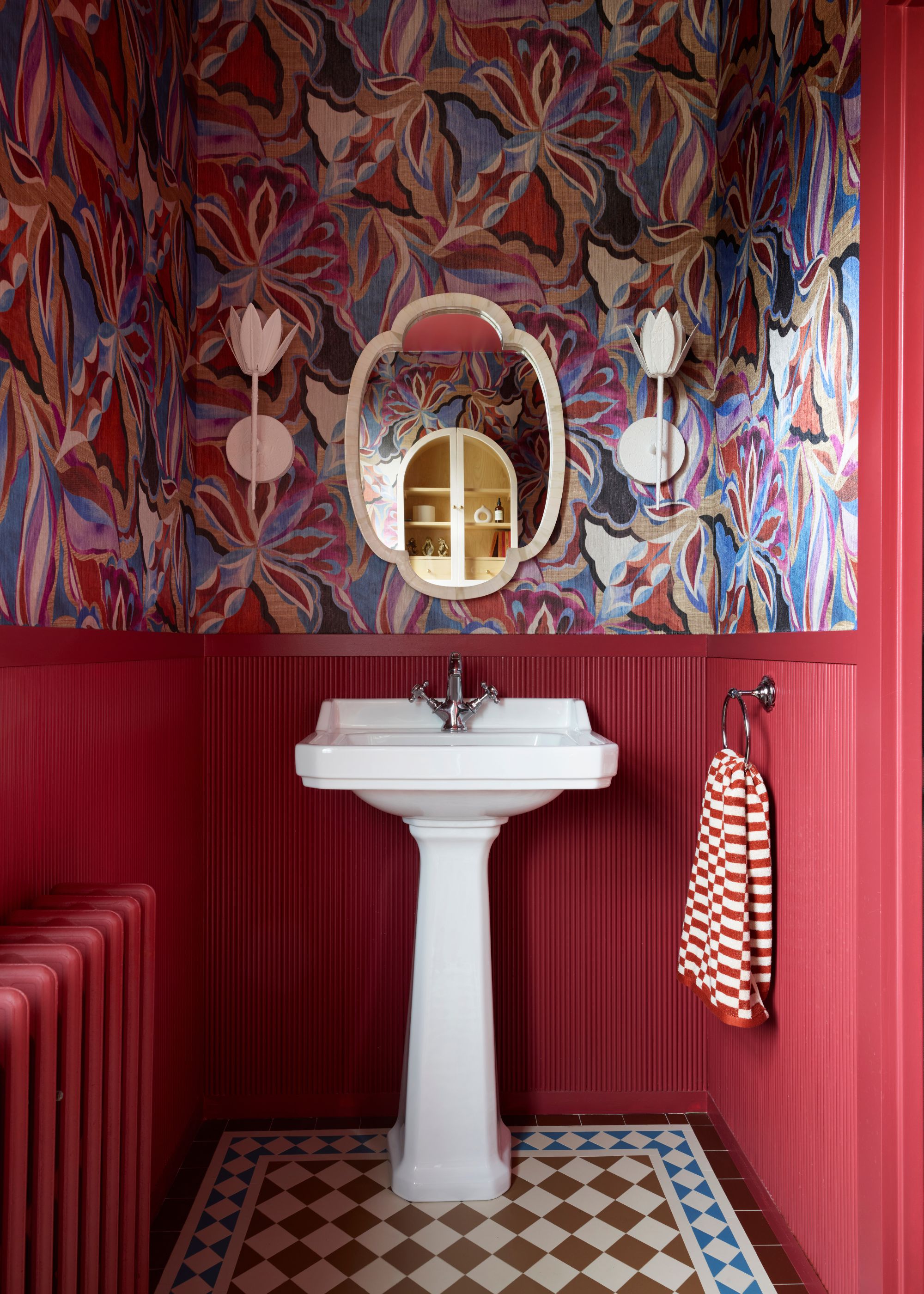
Reeded wall paneling adds lots of design interest to a room — a stylish choice for small spaces.
Veering away from the more traditional types of wall paneling to something more unexpected, reeded paneling is a more contemporary way to add design flair to a room. It can be seen in the cloakroom shown above.
"The vertical detail adds subtle texture and interest without overwhelming the room, while painting it in Farrow & Ball’s Picture Gallery Red gives it real depth and warmth," explains London-based designer Simone Gordon of Owl Interior Design.
Although this is a stylish and modern type of wall paneling, it's best suited to small rooms since it could overpower larger spaces.

Simone is a passionate interior designer and the co-founder of Owl Interior Design, a London-based studio dedicated to creating thoughtful, refined spaces. With a background spanning interior design, branding, and event styling, Simone brings a holistic approach to every project. At Owl, she works collaboratively with clients to craft spaces that feel personal, considered, and effortlessly stylish. Whether designing compact apartments or expansive family homes, she approaches each project with a deep understanding of architecture, function, and the way people live.
5. Horizontal Wall Panels
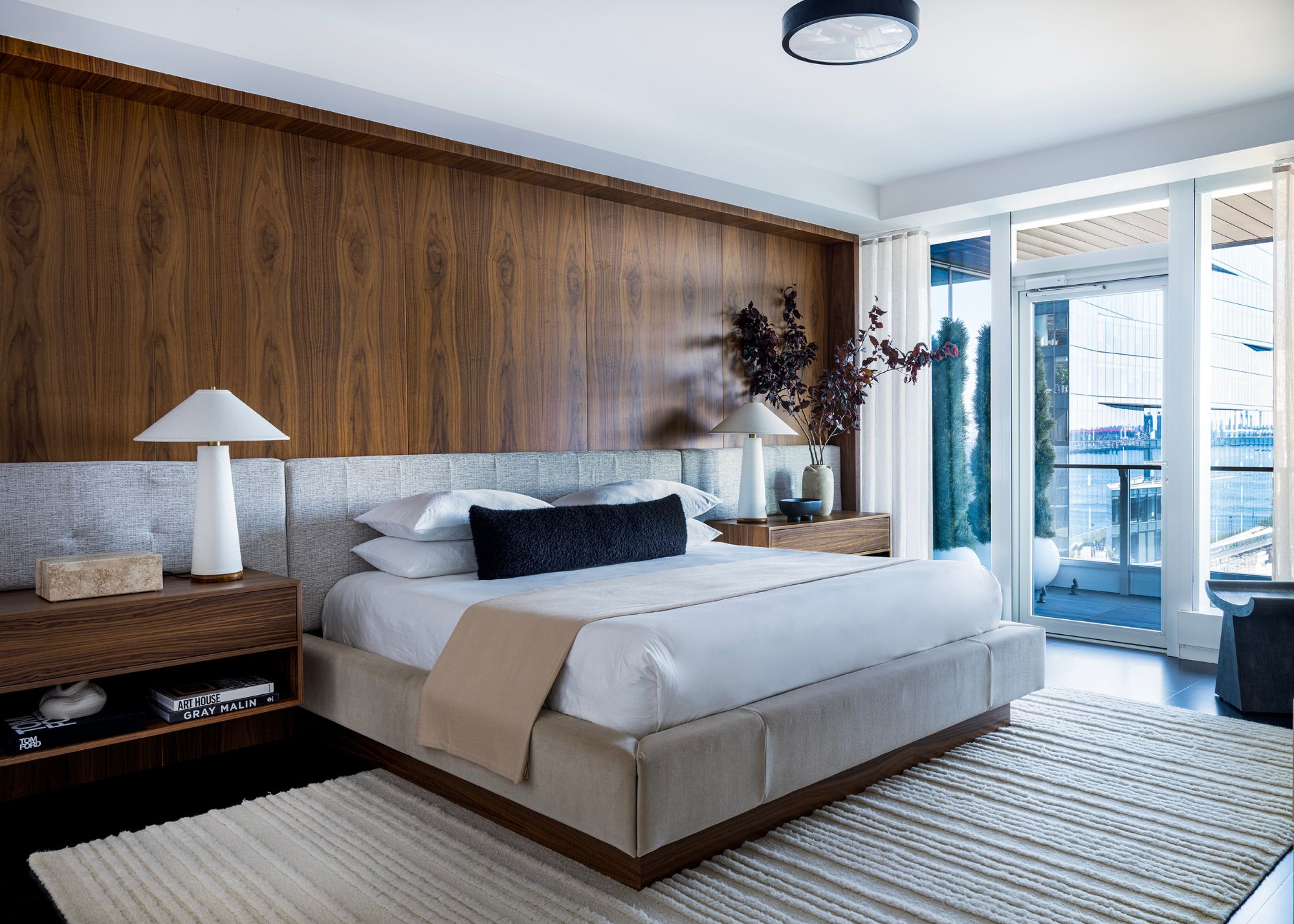
Lean into a sleek and contemporary look with large wooden wall panels that bring richness and warmth to a room.
Large horizontal panels offer a sleek and contemporary bedroom wall panel idea, one that celebrates the warmth of wood. "This type of wall paneling allows for the ability to see all the gorgeous grains and patterns in each panel," says interior designer Nicole Hirsch, who designed the space shown above.
"The repeat we were able to achieve through the cuts coming off the same large piece of wood is incredibly elegant and artistic," Nicole adds. "The only con of using real wood is that it is obviously more expensive than a veneer."
6. Victorian Wall Paneling
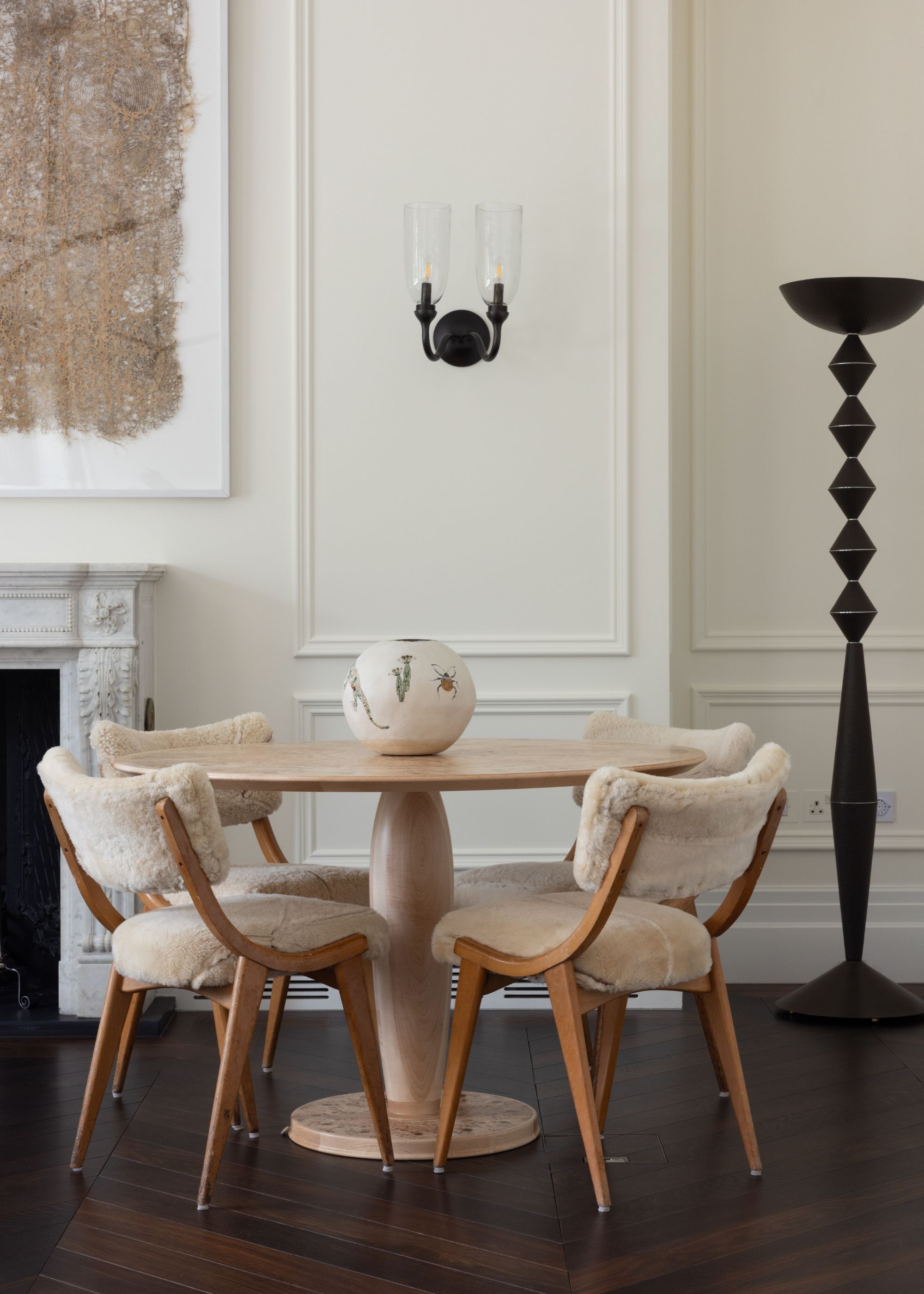
Victorian paneling is classic and timeless, a stylish option for period homes.
Victorian-style paneling is not only stylish but also timeless. In the right setting — think period homes with well-proportioned architectural features, Victorian-style paneling adds a sense of grandeur and elegance.
"This type of wall paneling adds character and architectural depth to a room," says interior designer Portia Fox, who designed the neutral living room shown above. "One of its main advantages is the way it breaks up large wall expanses, creating visual interest without relying solely on color or artwork. It also provides a subtle frame for furniture and decorative pieces."
But beware, it's best used in more traditional homes and can quickly feel out of place or awkward in more contemporary settings. While peel-and-stick wall molding kits have made it easy and affordable to install, it's worth considering if it's right for the architecture of your home first.
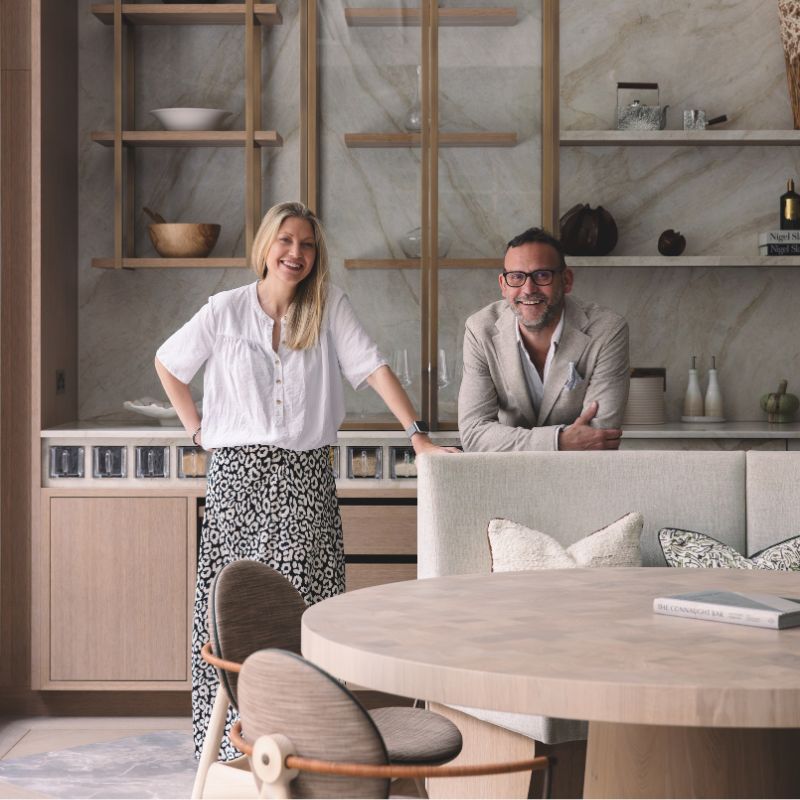
Portia founded her design practice in 2018 and directs its creative vision while overseeing all aspects of project delivery. With 20 years of international experience across London, Europe, the Middle East, Asia, Africa, and the Caribbean, she has successfully led large-scale private residences and landmark developments. Previously working with leading names such as Candy & Candy and Katharine Pooley, Portia is known for her ability to manage complex projects with both creative and technical excellence.
7. Geometric Wall Paneling
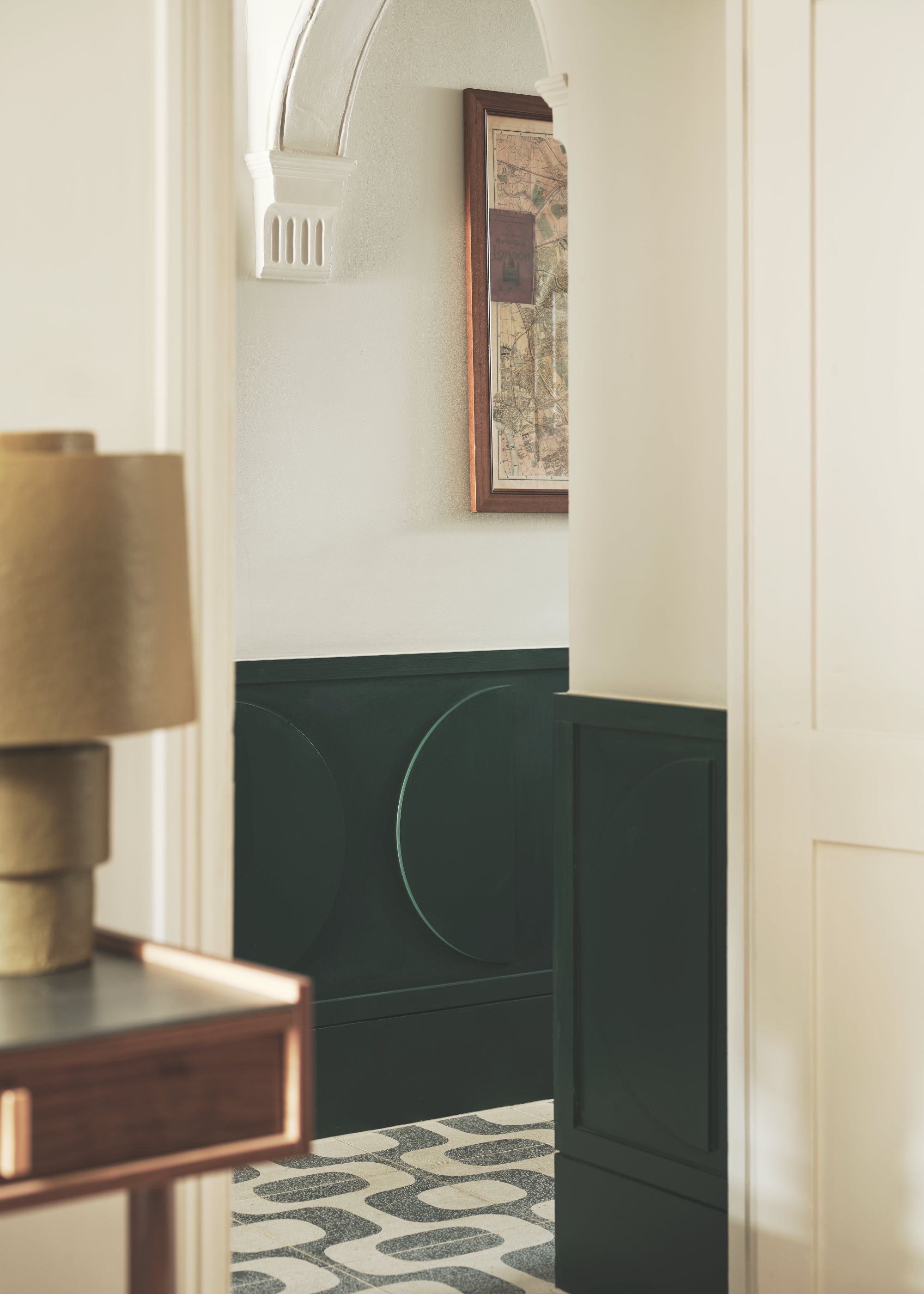
Create more of a statement with the use of geometric wall paneling. In the right setting, it can feel both fun and stylish.
If you're on the hunt for a more unexpected and playful type of wall paneling, look no further than geometric paneling. "Our client wanted a contemporary look that complemented the home’s period features while delivering a little joy and surprise on arrival," interior designer Simone Gordon of Owl Interior Design says of the geometric paneling in this hallway.
"Instead of traditional paneling, we designed this geometric paneling, a bold composition of circles and semicircles," she adds. "The result is a playful modern-meets-traditional statement that enlivens a small, previously overlooked space."
Although geometric paneling feels fun and adds lots of interest, one thing to keep in mind is that it may not be the most timeless option. If you're looking for a classic style that'll withstand interior design trends, styles such as tongue-and-groove may be a safer bet.
8. Shaker Wall Paneling
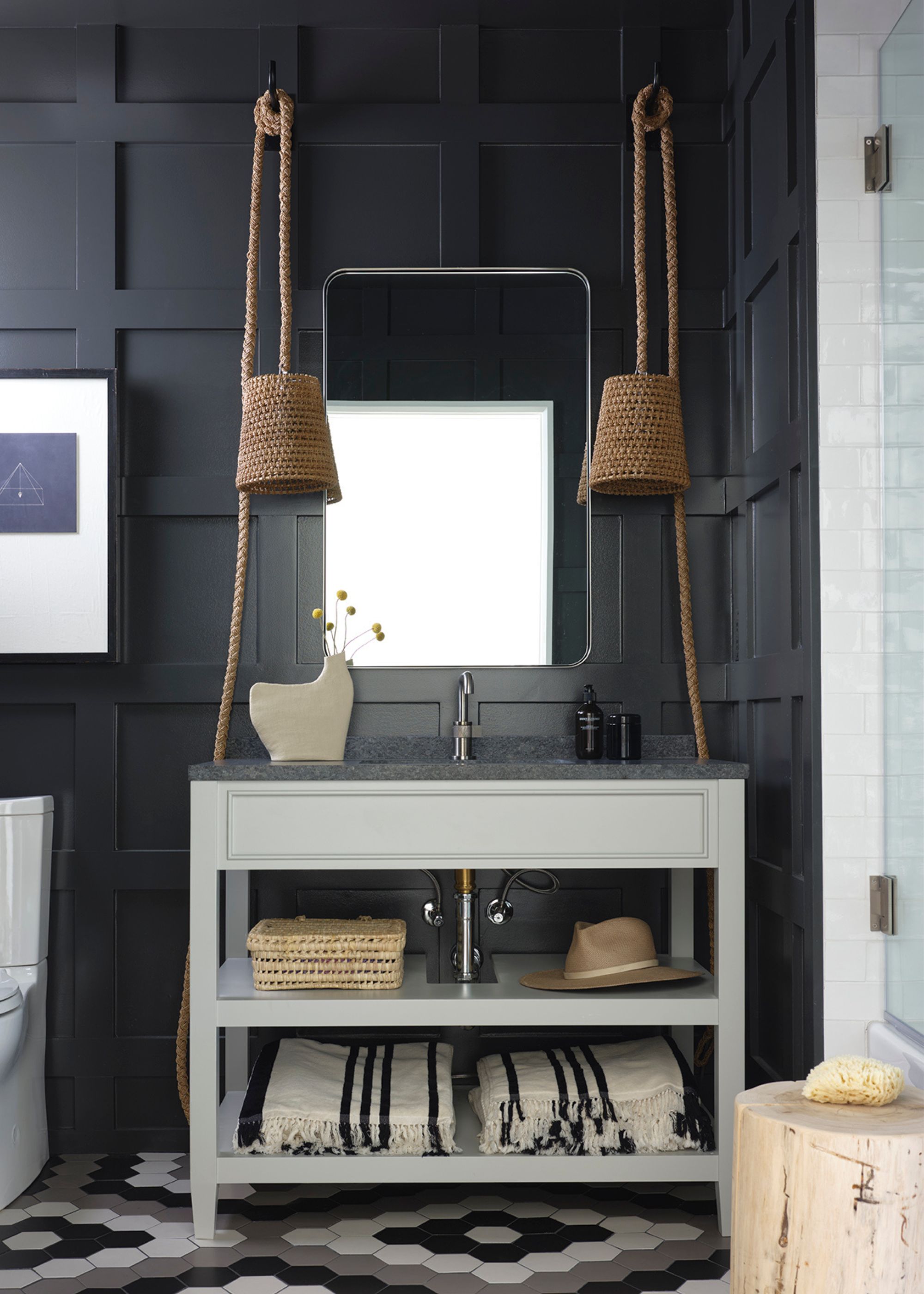
Offering symmetry and clean lines, shaker-style paneling is well-suited to modern homes.
According to most designers, shaker paneling is still in style. Also known as board-and-batten, it creates a sleek, streamlined look. "This style layers vertical battens over smooth boards to create a clean, architectural grid," explains designer Jessica Whitley.
"Its strengths are its timelessness and adaptability: it can be scaled to read understated and modern, or more traditional and ornate with additional trim," Jessica continues. "It also adds durability and protects walls in high-use areas."
"The main challenges are craftsmanship and planning — crooked battens or poorly considered proportions can throw a room off balance, and layouts must work seamlessly with windows, outlets, and doors," says Jessica.
9. Wainscoting
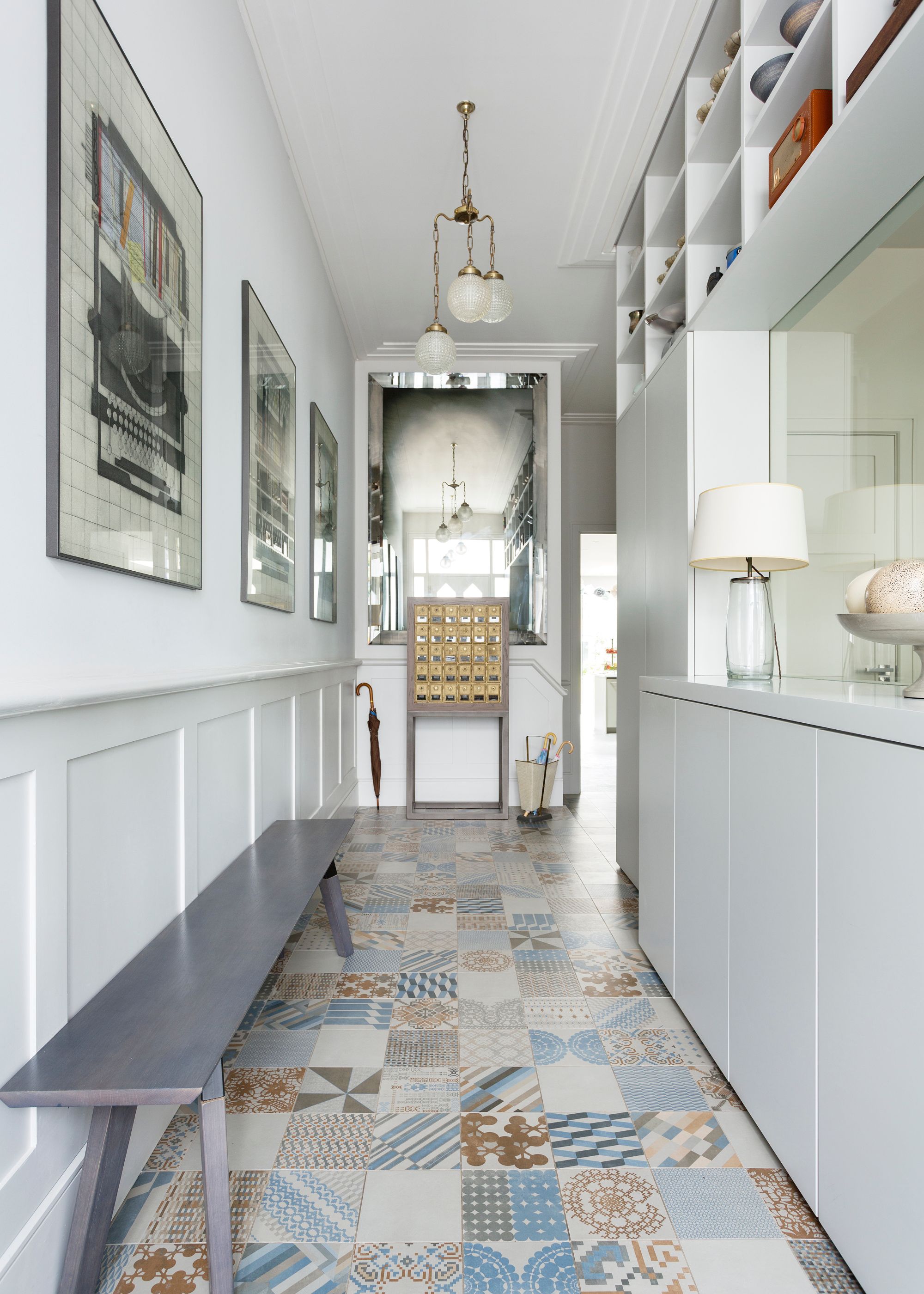
Paneling just the lower half of walls keeps spaces feeling uncluttered, an effective choice for hallways.
Wainscoting ideas refer to types of wall paneling that cover the lower portion of a wall, making it a popular choice for hallways. "Here, we aligned the height of the paneling with the bespoke built-in storage opposite, ensuring a balanced and thoughtfully designed entryway that naturally guides you into the home," explains Felix Milns of HUX London, of the space shown above.
"The structured, pared-back framework provides a perfect backdrop for layering in personality, pattern, and color, whether through mosaic tiles, bold rug runners, statement wallpaper, or richer wall tones," says Felix.
10. Shiplap Wall Paneling
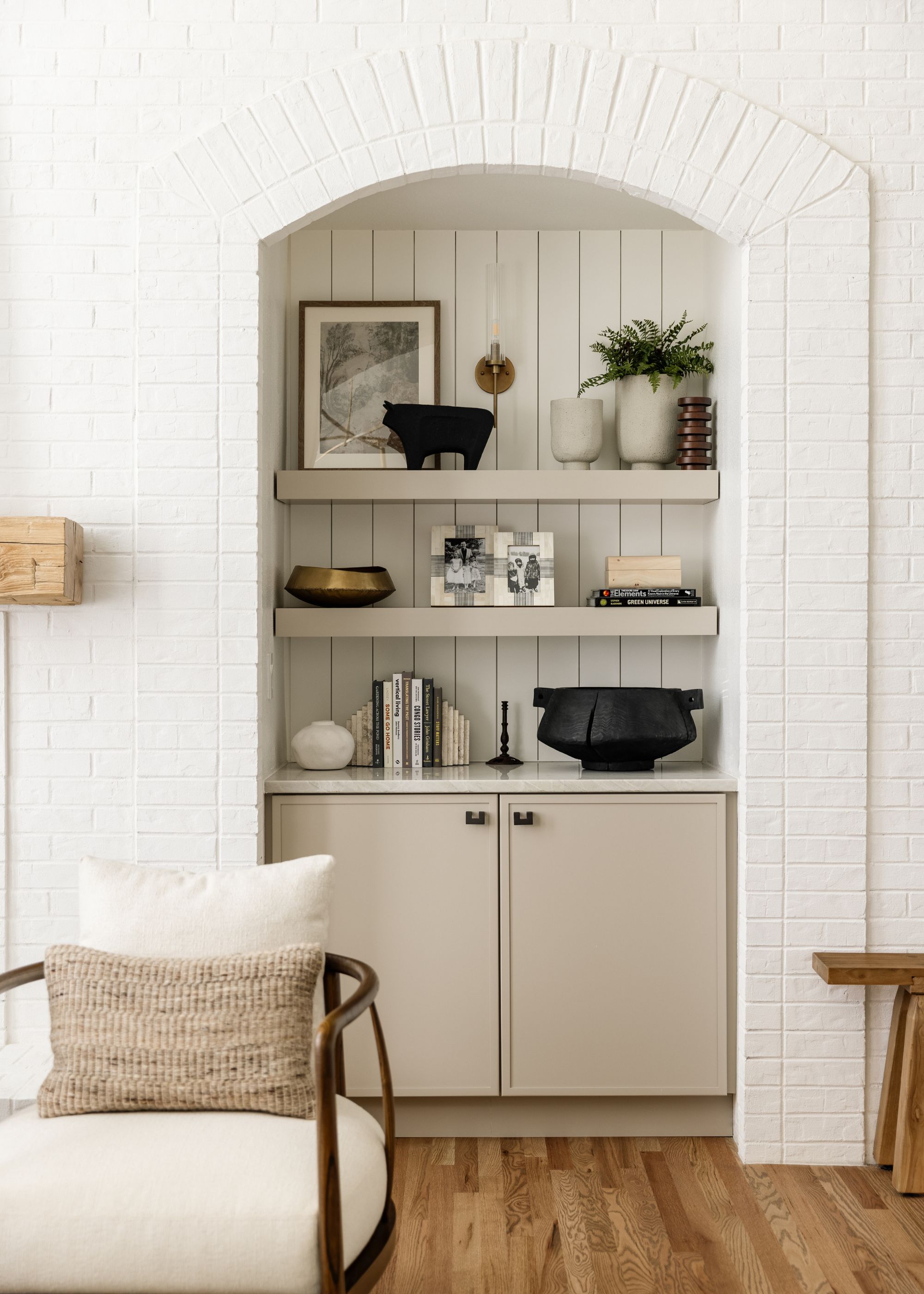
Perfect for rustic spaces, shiplap is a classic style that adds plenty of charm to a space.
Shiplap is a popular type of wall paneling defined by its overlapping joint system, which creates a larger gap between each panel than interlocking tongue-and-groove styles. While a simple and classic option, it creates a more rustic look than other styles of wall paneling — as seen with the living room paneling shown above.
"For the built-in shelving nook, we used MDF shiplap paneling installed vertically," says interior designer Peggy Haddad. "Instead of leaving the back wall plain drywall, the subtle lines of shiplap add just enough texture and rhythm to make the display feel intentional and layered. It draws the eye into the niche, gives depth behind the styled objects, and creates a sense of custom craftsmanship without overwhelming the space."
11. Herringbone Wall Paneling
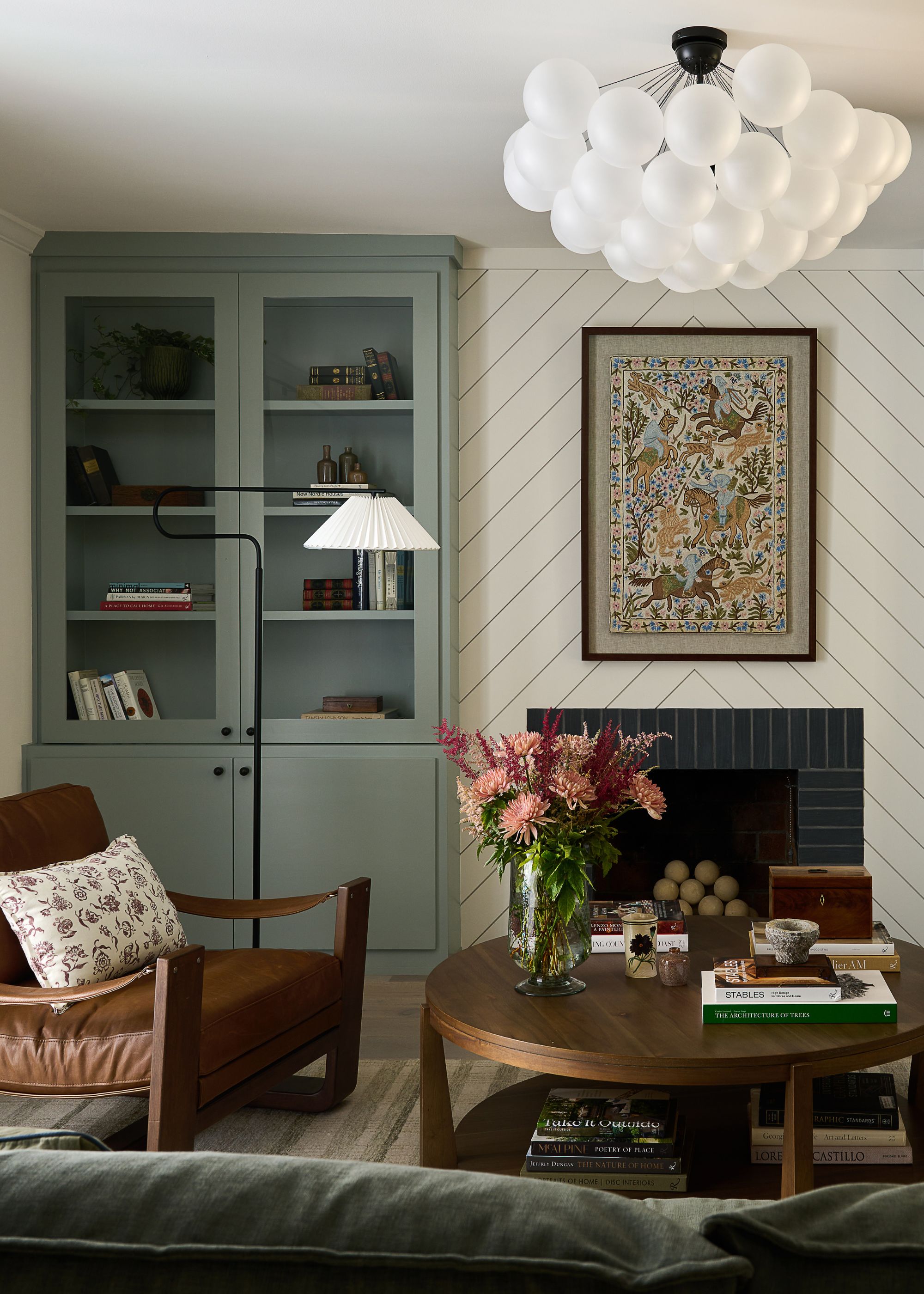
Add a sense of movement to your wall paneling with a herringbone style layout.
One way to create a more interesting look with wall paneling is to opt for a herringbone style. "This is a nickel gap tongue-and-groove, but laid in an unexpected way," says designer Christine Costa-Zippert.
"This home is a mid-century bungalow, and the herringbone layout of the tongue-and-groove wall paneling behind the fireplace gives a throwback feel to 50s and 60s wall paneling without feeling costume-y or tropey mid-century."
Although stylish, you may want to keep herringbone paneling to accent wall ideas so as not to overpower the room.
12. Beadboard Wall Paneling
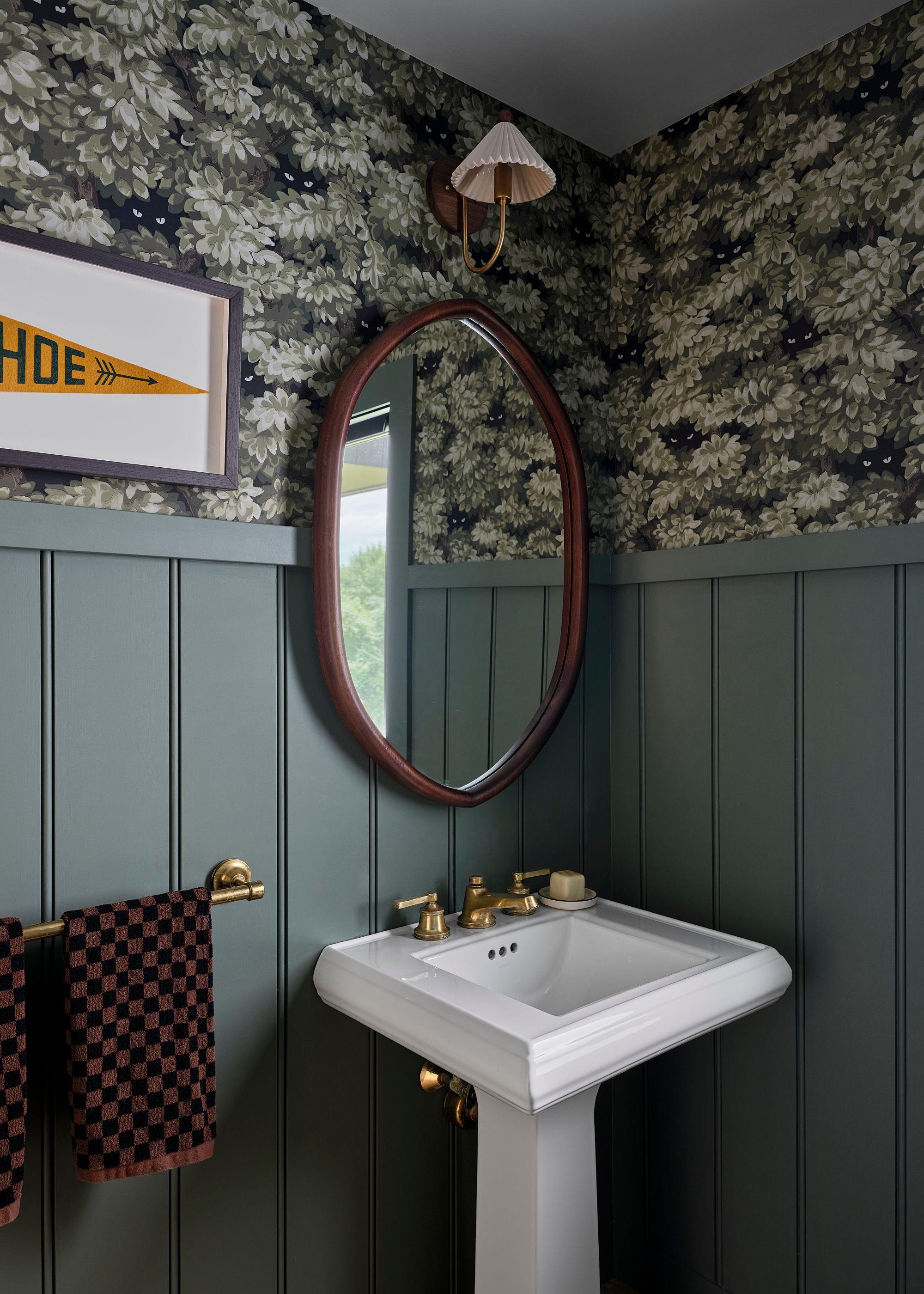
If you want to create more of a decorative look, go for beadboard wall paneling.
The third and final variation of tongue-and-groove paneling is beadboard, which offers a more decorative look with its ridge detail between each plank. "This type of wall paneling is especially effective in smaller spaces, where it adds dimension and durability," says designer Elana Tenenbaum Cline of Carta Creatives.
While it's a great way to add charm to rooms such as small bathrooms (with more detailing than other tongue-and-groove variations), Elana adds that "in very compact spaces, proportion is everything — too much can overwhelm."
13. Slatted Wall Paneling
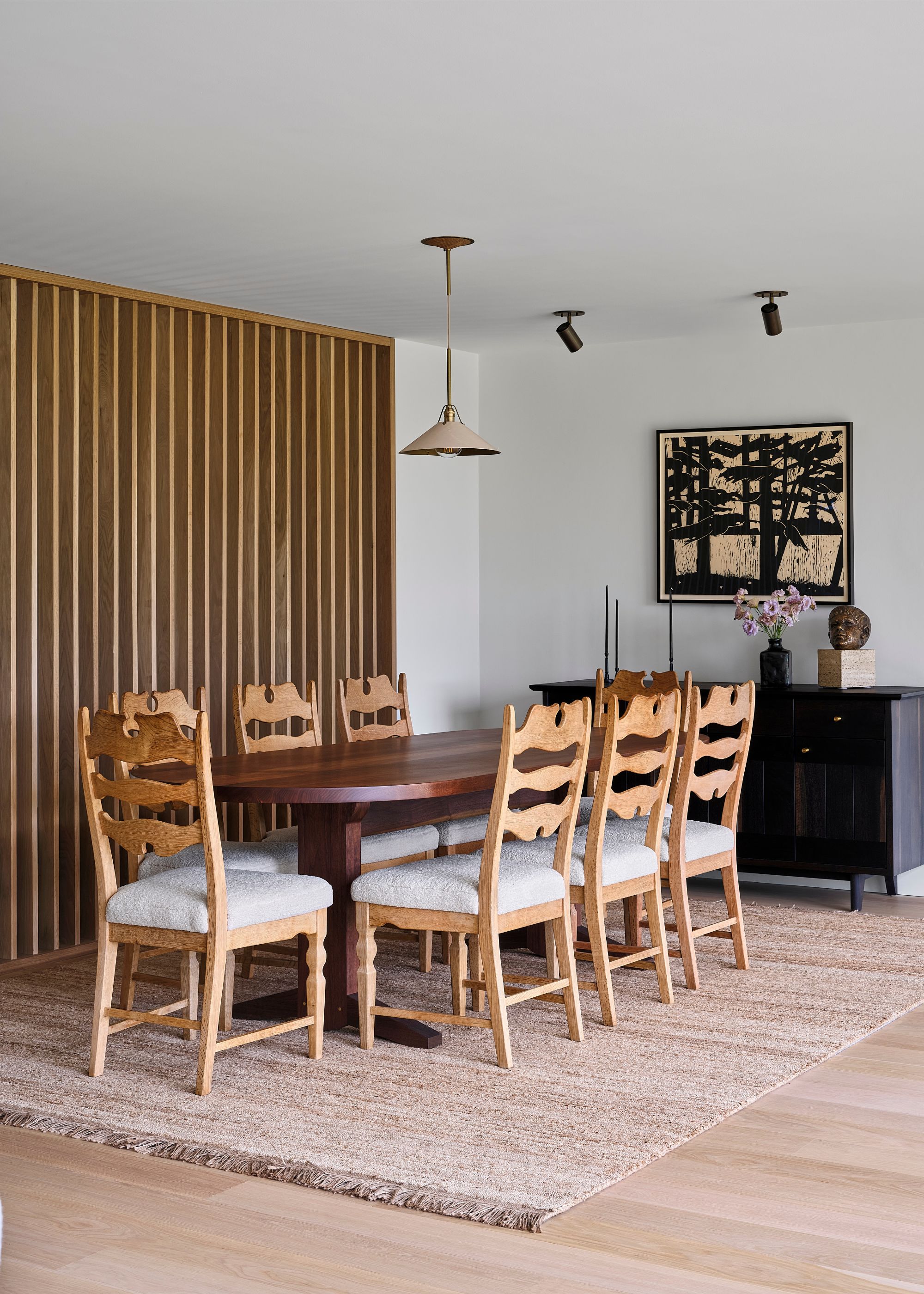
Slatted wall paneling feels contemporary and refined, while the warm tones of wood help make a room feel cozy.
Slatted wall paneling is a contemporary wood accent wall idea, and a great option if you want to embrace the warmth of natural wood.
"In this dining room, we designed a see-through wood slat wall," says designer Elana Tenenbaum Cline. "The warmth of the natural wood brings texture and a tactile quality that softens the architecture while adding rhythm and continuity throughout the room."
The benefit of this type of wall paneling is that it defines a space and creates intimacy without blocking sightlines or light. "I love it because it strikes the perfect balance between utility and design," says Elana. "It’s not just decorative, it actually shapes how the room is experienced."
That said, the designer adds that this type of wall paneling "requires precise craftsmanship and thoughtful placement to avoid feeling heavy."
Once you've decided on the right type of wall paneling for your space, you may want to add color, and to do so, knowing how to paint wall paneling correctly is key.

Emily is a freelance interior design writer based in Scotland. Prior to going freelance in the spring of 2025, Emily was Homes & Gardens’ paint and color editor, covering all things color across interiors and home decor for the Homes & Gardens website. Having gained specific expertise in this area, Emily is well-versed in writing about the latest color trends and is passionate about helping homeowners understand the importance of color psychology in home design. Her own interior design style reflects the simplicity of mid-century design and she loves sourcing vintage furniture finds for her tenement flat.
